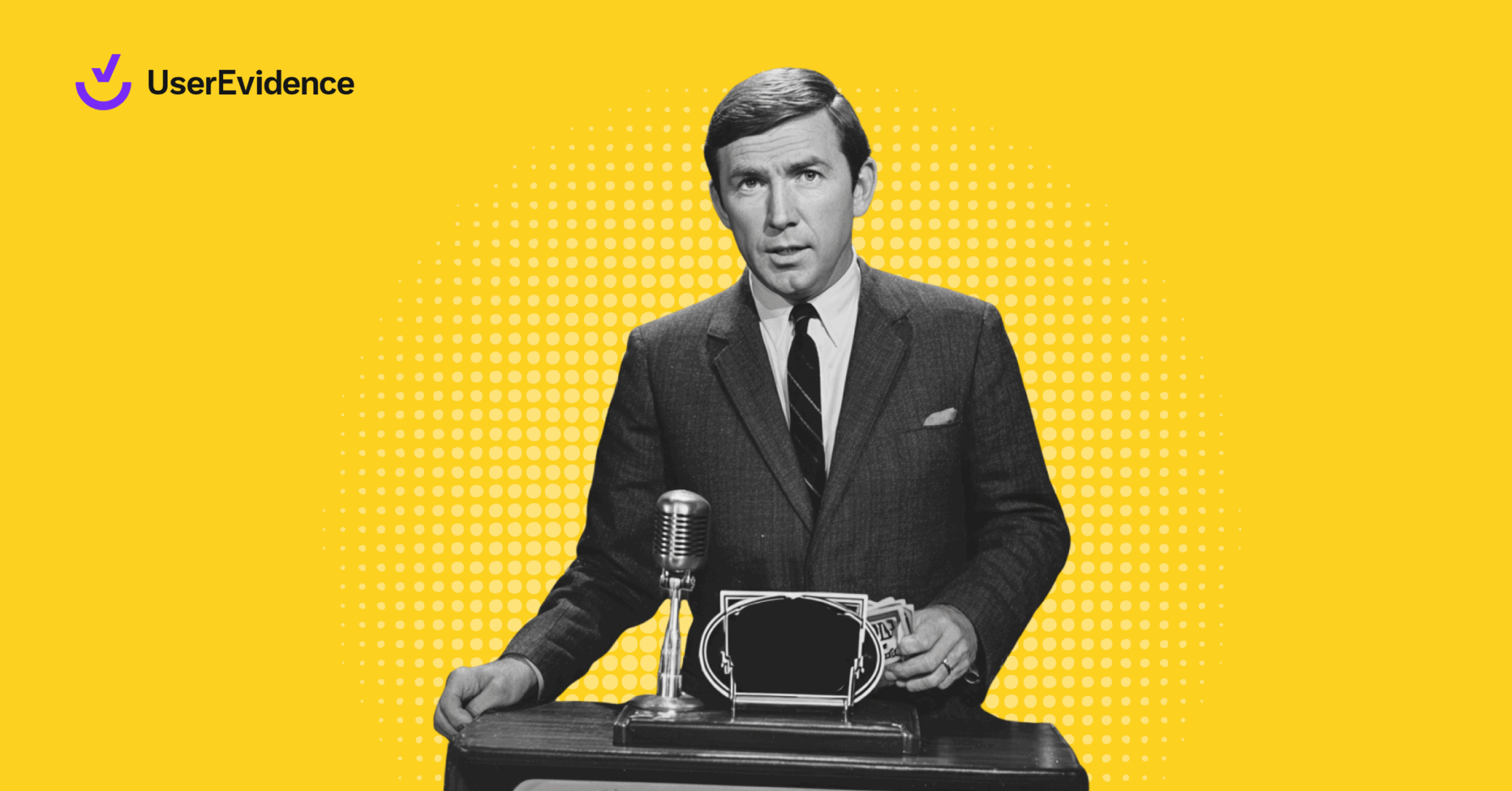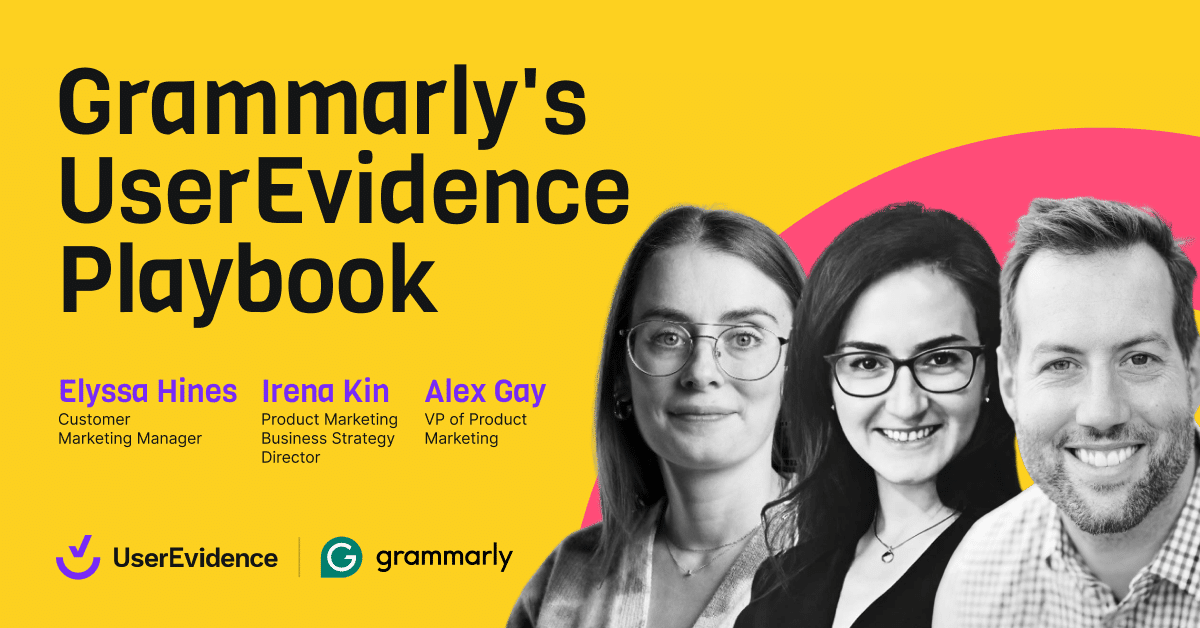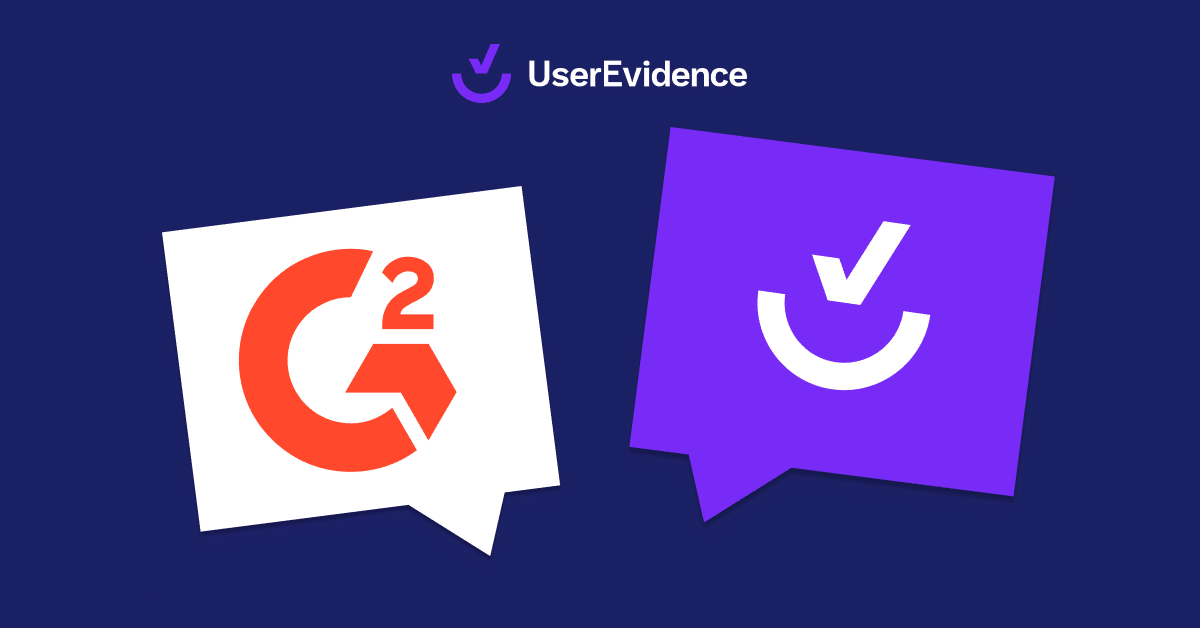TL;DR
Despite your best efforts, your customer evidence library likely has some gaps. For example, it may overlook key competitors or industries or fail to highlight how your product or service solves challenges for a specific persona.
It’s on you to find those gaps—and fill them. But you don’t have to go on that journey alone. Your entire GTM team can lend a helping hand, too. You just need to ask.
Key Topics:
- 3 places to look for your evidence gaps
- Tips for identifying the right sellers to interview
- The best questions to ask your teams to source the best insights
- How evidence gaps statement can pave a clear path forward
- Best practices for designing customer surveys that help you fill the gaps
And we won’t gatekeep until the end–you can grab 3 worksheets that will help you interview your GTM team to identify your evidence gaps right here.
The worst work a marketer can do is work in a silo. I’ve learned this the hard way over and over again.
It’s not because the work isn’t good work. Odds are, some of our most creative, coolest, most pride-worthy work has been dreamed up, executed, and launched by yours truly.
But then…you revisit that work a few months later and realize that it didn’t perform as well as you thought it would. Your internal team wasn’t as hype about it. The views were meh, the engagement fell flat.
I feel this the most when creating content for sales.
That case study that I spent 8 months painstakingly moving back and forth between our team, the customer’s team, the customer’s legal team, our design team, their legal team again–the one that I was SURE would earn me uproarious applause from the sales team when I sent the Slack out to the team that it was ready to share sits gathering dust in a forgotten Google Drive folder.
Nothing worse.
But the reality for most marketers. We think our work is great. Sales doesn’t feel the same.
And that’s not just an anecdote–we did some original research recently, and 600+ marketers, sellers, and buyers told us that exact scenario was true.
From our research, two-thirds of sellers (67%) said a deal of theirs has suffered or been slowed down because they couldn’t produce relevant, specific customer evidence in a timely manner.
…isn’t that our entire job? Producing relevant, specific customer stories and stats that will help move deals along? And don’t we think we’re doing that?
Our sales team doesn’t feel the same.
Which is exactly why I’ve found that the best way to ensure that the work I’m doing is actually impacting our bottom line is to just ask sales.
OK…it’s not exactly that simple. What I actually do is interview our sales team regularly in order to make sure that our team is curating and sharing the right customer evidence that is going to help them seal the deals they’re working, faster.
What I found as I started to interview our sales team more regularly was this: we actually had some big gaps in our customer evidence library that were holding them back in competitive deals.
So, I’m going to share my step-by-step guide to how to conduct these internal interviews (then how to let those interviews guide how I can fill those customer evidence gaps) right here:
First things first: where could your evidence gaps be?
Unlike the Loch Ness Monster, the missing remote between the couch cushions, or your car keys when you’re running late for coffee with your friends, the gaps in your customer evidence library aren’t hiding—they’re right in front of you. You just need to know where to look.
Your sales funnel
There are 1,001 ways to structure a sales funnel, and every go-to-market (GTM) team has its own twist—and that’s perfectly fine. But for simplicity’s sake and to clarify our point on how your funnel can help identify evidence gaps, let’s stick to the classic stages: awareness, intent, consideration, and purchase.
Now, look at the conversion rates as buyers move through the stages. Are there any notable drop-offs?
For example, are buyers flying through early meetings with your Sales teams only for deals to stall between consideration and purchase? That could signal a lack of bottom-of-the-funnel evidence that speaks to decision-makers, like the CFO, who will protect their budgets until you can prove an impact on their bottom lines.
Or maybe you’re struggling to move industry-specific buyers through the middle of the funnel. If true, sellers may lack evidence relevant to that buyer’s industry or unique use case.
Industry evidence and actual customer data are the two most impactful types of customer evidence that moves the needle for buyers. Get more insights from our report ➡️The Evidence Gap: Why Your Buyers Aren’t Convinced—And How To Win Them Over
Sales qualitative feedback
While a full-funnel analysis will give you a data-backed guiding light, firsthand insights from frontline sellers can add context the numbers alone can’t bring to light.
Use these conversations to ask sellers questions like:
- Is our GTM message falling flat with specific buyer personas?
- What objections do you hear, and how are you addressing them?
- Are specific competitors beating us in certain regions? If so, what’s giving them the edge?
Your goal isn’t to solve everything at once but to get a sense of where your library stands today. The deeper dive will come later, but for now, pair this qualitative feedback with the data from your funnel analysis to start crafting a plan for more structured interviews that reveal the good stuff.
Win-loss analysis
Deals typically fall through the cracks for a few reasons: fear of change, indecision, budget constraints, or competition. Your Sales team probably knows which box to check, but why rely on guesswork when you can go straight to the source with a win-loss analysis?
While not all would-be buyers will have the time or willingness to participate, those who do can provide invaluable insights into their decision-making process, which you can use to fill gaps or reposition existing content that doesn’t quite hit the nail on the head.
For example, if a buyer cites a lack of product value, perhaps the seller didn’t provide validated proof that showed how your product or service could save them time or money.
Conversely, a win analysis can help you determine the factors that tipped the scale in your favor. Take these insights to double down on what’s working and replicate that success in future deals.
For instance, if a new customer brings up a specific piece of evidence, like a testimonial from one of their peers, consider hosting an enablement session with your Sales team to walk them through how that seller used the asset to seal the deal. Even better, invite the seller to walk their colleagues through their thinking in their own words.
Pro Tip: Simplify the feedback process by sending buyers (from won and lost deals) a short survey asking why they decided not to move forward with you…or why they did.
How to find the right voices at your company
You know where your evidence gaps are hiding—or at least where to look—but how do you ensure you get the best insights to fill them? Start by creating a short list of sellers you can count on for reliable input. I call them my strike team.
Here’s how to build your strike team:
- Diverse perspectives: Include sellers from different regions and customer segments, such as enterprise vs. small-to-medium business (SMB), to ensure you capture a range of experiences.
- Seniority level: Include a mix of senior and junior sellers to get balanced feedback on your library’s usefulness and its use in the field.
- Track record: Prioritize sellers with a proven history of meeting or exceeding their quota.
That said, as you dive into your strike team, watch out for recency bias. While your Sales team won’t intentionally lead you astray, you don’t want your long-term evidence strategy to hinge on flash-in-the-pan feedback that’s simply top-of-mind.
So, to balance your insights, get a broader perspective from leadership, such as the CEO or VP of Marketing. Ask them more detailed questions about your strategy and how they see customer evidence fitting into the picture in the coming quarters.
Ask the right questions
Start by focusing on what you already know. Are competitors winning because they convey their value prop better? Is there a lack of evidence for key verticals? Use these gaps to shape your questions.
But asking open-ended questions like, “What customer evidence do you need?” will only scratch the surface. You need to go deeper with tailored questions for Sales and leadership stakeholders. Here are some examples for each audience.
Sales:
- What’s the hardest part about convincing buyers to progress beyond a discovery call?
- Are there any recurring objections you’re hearing?
- What’s a common “aha!” moment that helps buyers see the value of our product or service?
Leadership:
- What is our most significant competitive advantage, and where do we fall short?
- How can we better equip our Sales to get buy-in from the decision-makers?
- Are there any market shifts or trends we need to address either right now or next year?
As you gather feedback, patterns will emerge, bringing your gaps into view and, more importantly, how you can fill them. That said, don’t hesitate to dive deeper to clarify conflicting answers or insights that weren’t initially obvious.
Turn the patterns into actionable gap statements
Now that you’ve gathered insights from Sales and leadership, it’s time to turn those patterns into actionable gap statements—think of these as your blueprints—to develop the ROI-backed evidence needed to build trust and close more deals.
Here’s how to turn patterns into clear, actionable evidence steps:
And just like that, you’ve turned conversations with key stakeholders into North Star statements you’ll use to craft customer surveys that uncover the insights you need to close more deals.
Now, I’m not expecting you to skim this once and become an internal interviewing expert. Everybody (including me) could use a little guide. That’s why we put together 3 worksheets to guide your interviews with 3 key stakeholders: Marketing leadership, Sales leadership, and the Sales team on the ground. Each worksheet has questions to guide your conversations, placeholders for notes, and prompts to help you identify the pattern, gap statement, and action for each interview.
Getting started: Designing customer surveys that fill the evidence gaps
You’ve mapped out your gaps. Now, it’s time to fill them with customer surveys designed to uncover the insights and feedback needed to move the needle.
Here are some survey design best practices from our leadership team to get you started:
- Group related questions: Organize your surveys by topics or themes to make them easy for your customers to follow. For example, pair a multiple-choice question like, “Which competitors did you consider?” with an open-ended one about why they chose your solution. According to Evan Huck, UserEvidence’s Co-founder and CEO, this structure ensures the survey encourages detailed responses without overwhelming the customer.
- Limit open-ended questions: Don’t ask too many questions, advises Myles Bradwell, UserEvidence’s VP of Customer Success: “Brain-heavy questions exhaust customers.” UserEvidence’s Co-founder and CPO Ray Rhodes echoes this, cautioning against chasing perfection with super-specific questions that can feel overwhelming.
- Follow a natural progression: Start your survey with easy-to-answer questions like, “Why did you buy?” or “What features are most relevant?” Then, once respondents are comfortable, ask more detailed questions about ROI, performance, and impact. Evan refers to this as a “section-based flow” or “progressive arc,” where each question builds on the last to maintain engagement and avoid survey fatigue.
- Avoid complex language at all costs: If your survey and questions feel like a puzzle, don’t expect many responses. To get answers—and good ones at that—keep it simple with clear and conversational language that anyone can follow.
Now what? Send your surveys to customers, collect the data, craft compelling stories, and fill the gaps you identified with your Sales team. Then, make the assets readily available to them (and the rest of your GTM teams) with an evidence library, microsite, or another centralized location.
Want to explore how UserEvidence can help you transform internal interviews into actionable surveys that fill your library with ROI-backed evidence? Explore our Interactive Demo Center or book a demo today.





